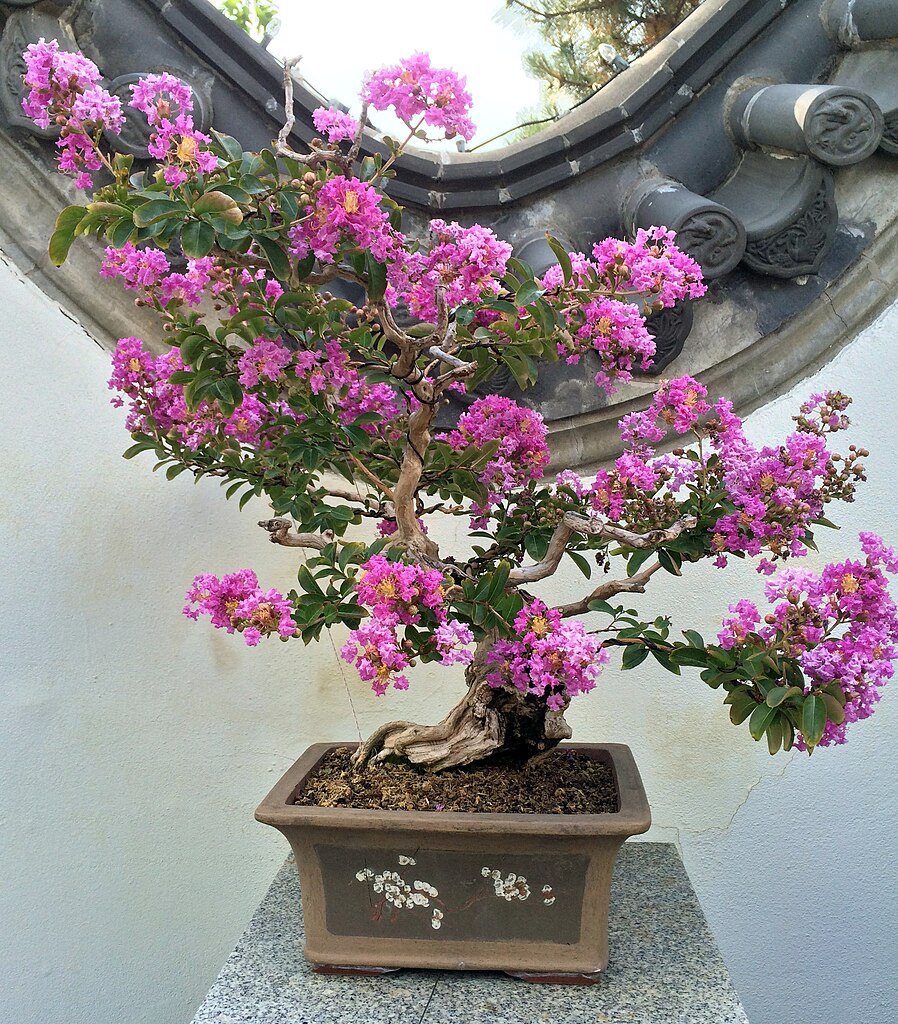Chapter 103 Lagerstroemia indica
103.1 Crape myrtle

A crape myrtle pruned in a mixed style combining bonsai and penjing features. The container is an example of a Chinese penjing container. Link to original image.
103.2 Soil: Moist Deciduous Mix
Ratio: 4 parts bark, 1 part grit
Add-ins: dolomitic limestone (~5 lbs/yd), Tree-Tone (15 lbs/yd)
pH: ~6.5 (slightly below neutral)
Moisture: Average moisture in growing season, barely moist in winter. Loves summer humidity.
103.3 Light
Routine: likes full sun in summer. Part shade in autumn will help with dormancy.
103.4 Cultivation Notes
103.4.1 Potting & Root Pruning
Repot in early spring.
103.4.1.1 Top & Branch Management
Crape myrtles flower on short shoots on the current year’s growth. They require special attention to pruning in order to maintain the flowers.
Heavy pruning: remove large branches and make major cuts in the fall. Seal wounds well so they do not get frost burned.
Fine pruning: allow new spring shoots to grow freely until they start to slow down and leaves harden. Clip the extension growth back to 2-3 leaves. The lateral buds will break and produce short flowering shoots.
103.4.2 Feeding
Switching from a 3:1:2 ratio fertilizer to a rose or tomato formulation will stimulate additional flowering.
103.4.3 Pests & Problems
In the Piedmont, crape myrtles are very susceptible to leaf-drop fungus. Trees that drop leaves in mid-summer should be sprayed with fungicide 3-4 times in the current year, and pre-treated before leaves start failing the following year.
Chemical Warnings: avoid spraying flowers with organic or synthetic chemicals. They are likely to burn and discolor.
103.4.4 Winter Storage
Store in mulch outdoors. Try to place in a shaded area so buds do not break in a mid-winter warm spell. Avoid letting them stay overly wet.
103.5 Propagation Notes
Crape myrtles are widely available from nurseries and garden stores.